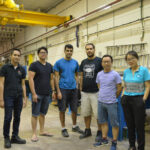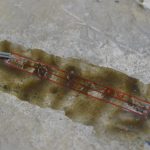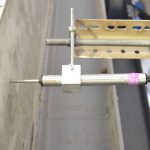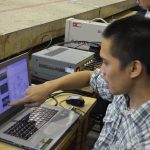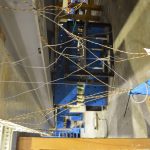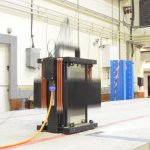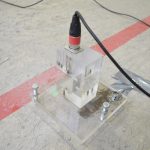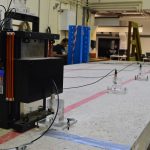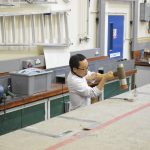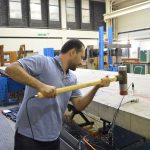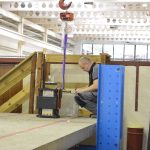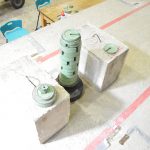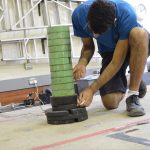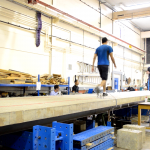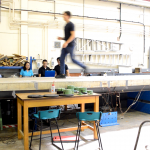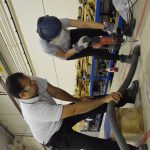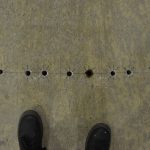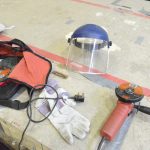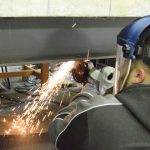Introduction
This case-study consists of a pedestrian reinforced concrete bridge at the University of Warwick civil laboratory, which has been decommissioned and demolished in 2017.
The objective of this project is to identify the presence of damage through analysis of monitored data. Damage was applied in three progressive stages: 1)-2) through drilled holes on the concrete slab and 3) a cut on the bottom flange of a supporting steel beam.
The following technicians/researchers have been involved in this project: Arnett Taylor, Neil Gillespie, Mohammad Reza Salami, Tiago Fachada, Yanjie Zhu, Arya Pamuncak, Wei Xiaojun, Adam Kelly, and Saif Alshalmani.
Monitoring system
The Warwick bridge has been instrumented with strain gauges, LVDT’s, accelerometers, a string gauge, and an inclinometer. The data acquisition system (DAQ) consists of a set of National Instruments cards, controlled through a Labview vi, which was developed entirely by Arya.
Tests
Some of the tests performed before and between the damage states include:
- walking tests near and at the fundamental frequency of the bridge;
- static tests based on mid-span dead-loads;
- shaker tests and a random walk across the bridge.
Shaker and hammer tests
Seven accelerometers were used along with a mechanical shaker to achieve an input/output modal identification of the bridge. Hammer tests were also performed.
Damage features
Two types of damage were applied in three progressive stages.
- First stage: six holes have been drilled on the concrete slab;
- Second stage: six additional holes have been drilled on the concrete slab (for a grand total of twelve);
- Third and final stage: a cut on the bottom flange of a supporting steel beam;
Analysis of data
The results of two damage identification methodologies are to be applied to this case-study. However, based on preliminary analyses, it can already be stressed that the natural frequencies of the bridge were not significantly affected by the damage.
![]()
